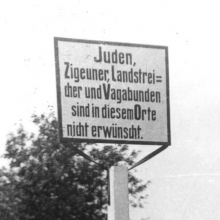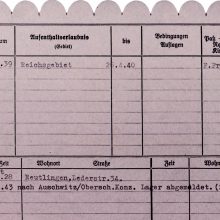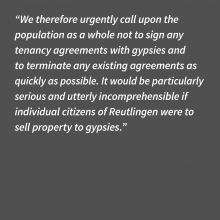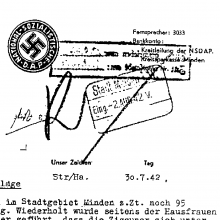The Nazi genocide of the Sinti and Roma
and the long struggle for recognition
and the long struggle for recognition
The Nazi genocide
of the Sinti and Roma and the
long struggle for recognition
of the Sinti and Roma and the
long struggle for recognition
„Racial Diagnosis:Gypsy“
Forms of exclusion
The Nazi state gradually excluded the Sinti and Roma from all areas of public life and deprived them of their rights. Their everyday lives were increasingly shaped by discriminatory special provisions, with the relevant initiatives often triggered by the municipalities themselves. Local authorities and decision-makers readily placed themselves at the service of the Nazis’ ideological objectives.

01 | Road sign in the Herford district, 1930s Herford Municipal Archives, photograph collection of Georg Heese
01

02.1 | The house at Lederstrasse 34 in Reutlingen, where the Reinhardt family would later live. In February 1939, the municipal authorities tried in vain to expel the family from Reutlingen using an eviction order. The family was later deported to Auschwitz, where almost all of its members died. Reutlingen Municipal Archives, S 105/1 No. […]
02.1

02.2 | The house at Lederstrasse 34 in Reutlingen, where the Reinhardt family would later live. In February 1939, the municipal authorities tried in vain to expel the family from Reutlingen using an eviction order. The family was later deported to Auschwitz, where almost all of its members died. ‘Deregistered on 15.3.43 to Auschwitz/Upper Silesia […]
02.2






